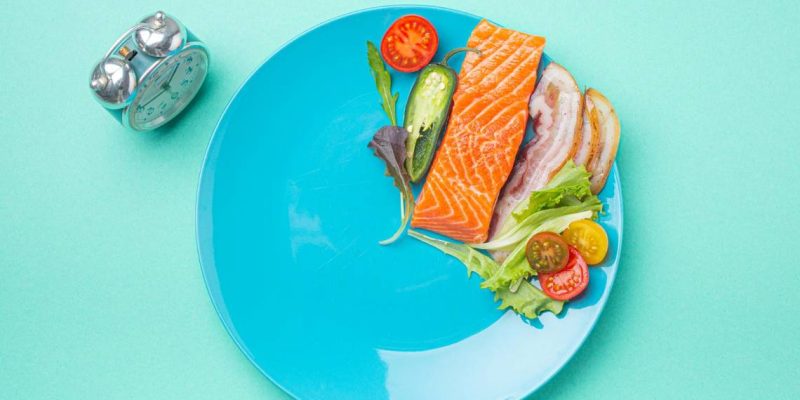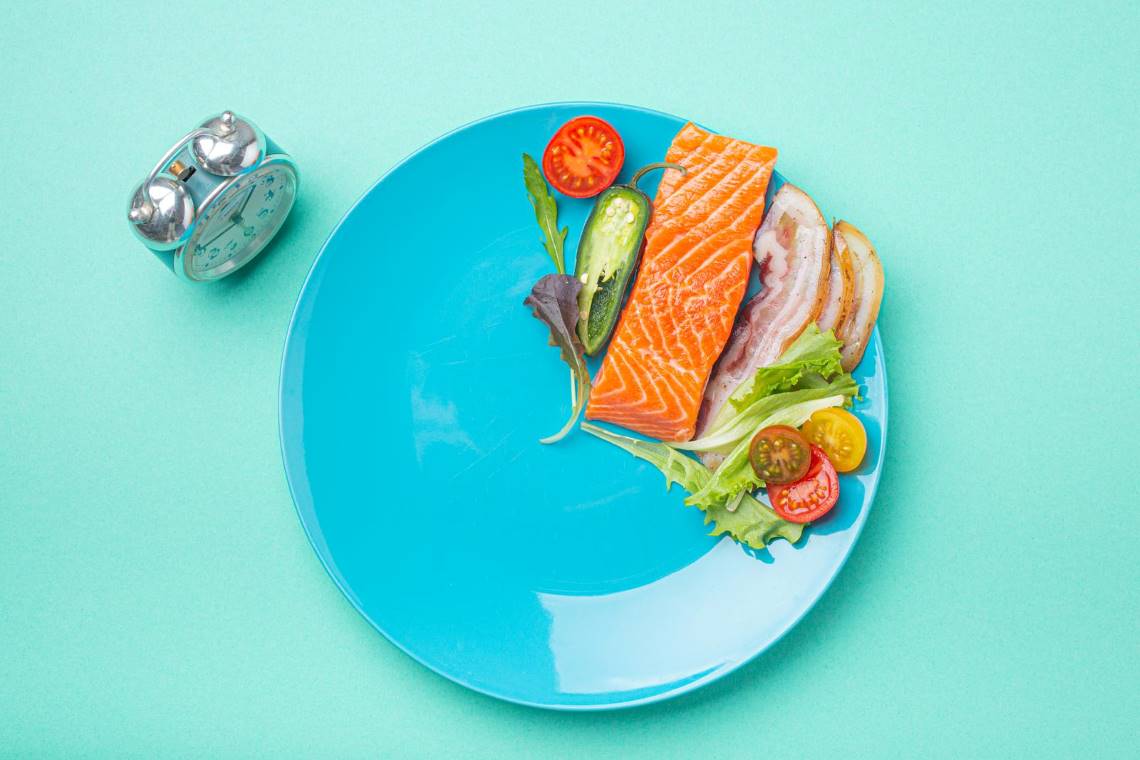Why Salmon, Mackerel, and Sardines Are Essential for Your Health
When it comes to superfoods, fatty fish like salmon, mackerel, and sardines are at the top of the list. Packed with omega-3 fatty acids, these nutrient-dense powerhouses offer many health benefits, from boosting heart health to supporting brain function. But did you know that fatty fish can also be a game-changer for those practicing intermittent fasting (IF)? This article explores why these fatty fish are so good for you, how they can enhance your intermittent fasting journey, and why they deserve a regular spot on your plate.
What Are Omega-3 Fatty Acids?
Omega-3 fatty acids are essential fats your body needs but cannot produce independently. They play a critical role in brain health, reducing inflammation and supporting heart function. The three main types of omega-3s are:
- ALA (alpha-linolenic acid): Found in plant-based sources like flaxseeds and walnuts.
- EPA (eicosapentaenoic acid): Found in fatty fish, known for its anti-inflammatory properties.
- DHA (docosahexaenoic acid) is also found in fatty fish and is crucial for brain health and development.
Fatty fish like salmon, mackerel, and sardines are among the best sources of EPA and DHA, making them a must-have in any healthy diet—especially when combined with intermittent fasting.
Top Fish High in Omega-3s
1. Salmon
Salmon is one of the most prevalent fatty fish, and for good reason. A 3.5-ounce (100-gram) serving of wild salmon contains about 2.3 grams of omega-3s. It’s also rich in high-quality protein, vitamin D, and B vitamins. Whether grilled, baked, or smoked, salmon is a versatile and delicious way to boost your omega-3 intake.

2. Mackerel
Mackerel is a small, oily fish that’s incredibly rich in omega-3s. One serving provides over 4 grams of omega-3s, making it one of the best sources available. Mackerel is also packed with vitamin B12 and selenium, which support immune function and metabolism.
3. Sardines
Don’t let their size fool you—sardines are a nutritional powerhouse. A single can of sardines contains about 1.5 grams of omega-3s, calcium, vitamin D, and protein. They’re also one of the most sustainable seafood options, making them an eco-friendly choice.
Health Benefits of Fish High in Omega-3s
1. Supports Heart Health
Omega-3s are renowned for their heart-healthy benefits. They help:
- Lower triglycerides (a type of fat in the blood).
- Reduce blood pressure.
- Prevent plaque buildup in arteries.
- Decrease the risk of heart disease and stroke.
2. Boosts Brain Function
DHA, a type of omega-3 found in fatty fish, is a major structural component of the brain. Regular consumption of fatty fish has been linked to:
- Improved memory and cognitive function.
- Reduced risk of neurodegenerative diseases like Alzheimer’s.
- Better mental health, including reduced symptoms of depression and anxiety.
3. Reduces Inflammation
Chronic inflammation is linked to many diseases, including arthritis, diabetes, and cancer. The EPA and DHA in fatty fish have potent anti-inflammatory effects, helping to reduce inflammation and protect against chronic conditions.
4. Promotes Eye Health
DHA is also a key component of the retina. Eating fatty fish regularly can help prevent macular degeneration, a leading cause of vision loss.
5. Supports Healthy Skin
Omega-3s help maintain skin elasticity, reduce acne, and protect against sun damage. They also play a role in managing conditions like eczema and psoriasis.
Fish High in Omega-3s and Intermittent Fasting: A Perfect Pair

Intermittent fasting involves cycling between periods of eating and fasting, and the foods you choose during your eating windows are crucial for maximizing its benefits. Here’s why fatty fish is an excellent choice for intermittent fasting:
1. Keeps You Full Longer
The combination of protein and healthy fats in fatty fish helps relax you, reducing hunger pangs during fasting. This makes it easier to stick to your fasting schedule.
2. Supports Fat-Burning
Omega-3s in fatty fish can enhance fat metabolism, making it easier for your body to burn fat during fasting. This is especially beneficial if weight loss is one of your goals.
3. Preserves Muscle Mass
The high-quality protein in fatty fish helps preserve muscle mass during fasting, ensuring that your body burns fat instead of muscle for energy.
4. Boosts Energy Levels
The nutrients in fatty fish, including omega-3s and B vitamins, provide sustained energy, helping you stay active and focused even during fasting periods.
5. Enhances Autophagy
Intermittent fasting promotes autophagy, where your body cleanses damaged cells and regenerates new ones. Omega-3s in fatty fish can enhance this process, further supporting cellular repair and anti-aging.
How to Incorporate Fatty Fish into Your Intermittent Fasting Diet
Adding salmon, mackerel, and sardines to your meals is easier than you might think. Here are some simple and delicious ideas:
- Grilled Salmon: Season with lemon, garlic, and herbs for a quick and healthy dinner during your eating window.
- Mackerel Salad: Flake smoked mackerel into a salad with leafy greens, avocado, and a light vinaigrette.
- Sardine Toast: Top whole-grain toast with mashed sardines, olive oil, and a sprinkle of chilli flakes for a nutrient-packed snack.
- Fish Tacos: Use grilled salmon or mackerel as a filling for tacos, paired with fresh salsa and cabbage slaw.
- Canned Sardines: Keep canned sardines on hand for a quick, no-cook meal during your eating window.
Sustainability and Safety Tips
When choosing fatty fish, opt for sustainable and low-mercury options. Here’s how:
- Look for wild-caught salmon or MSC-certified (Marine Stewardship Council) fish.
- Choose smaller fish like sardines and mackerel, which are lower in mercury.
- Avoid farmed fish that may contain higher levels of pollutants.
FAQs About Fatty Fish, Omega-3s, and Intermittent Fasting
1. How much fatty fish should I eat per week?
The American Heart Association recommends eating at least two servings of fatty fish per week (about 6-8 ounces total) to meet your omega-3 needs.
2. Can I eat fatty fish during my fasting window?
Fatty fish should be consumed during your eating window to break your fast and provide your body with essential nutrients.
3. Are fish oil supplements as good as eating fatty fish?
Supplements can be a convenient alternative, but whole fish provides additional nutrients like protein, vitamin D, and selenium, which supplements lack.
Conclusion: Make Fish High in Omega-3s a Staple in Your Intermittent Fasting Diet
Incorporating fatty fish rich in omega-3 fatty acids, such as salmon, mackerel, and sardines, into an intermittent fasting regimen can significantly benefit heart health, cognitive performance, and overall wellness. These nutritional powerhouses offer delectable flavours, enhance fat-burning, promote satiety, and provide sustained energy. Thus, these fish, renowned for their omega-3 content, are indispensable components of an effective intermittent fasting routine.
So, what are you waiting for? Head to your local market, pick up some fresh or canned fatty fish, and start reaping the rewards of these omega-3-rich superfoods today!
Resources:
1. National Institutes of Health (NIH)
- Website: https://www.nih.gov
- Why it’s trusted: The NIH is a leading health and medical research authority. Their resources on omega-3 fatty acids and dietary guidelines are evidence-based and regularly updated.
- Relevant Pages:
2. American Heart Association (AHA)
- Website: https://www.heart.org
- Why it’s trusted: The AHA is a leading organization dedicated to heart health, and its recommendations on fatty fish and omega-3s are widely respected.
- Relevant Pages:
3. Academy of Nutrition and Dietetics
- Website: https://www.eatright.org
- Why it’s trusted: This organization represents registered dietitians and provides science-based nutrition information.
- Relevant Pages:









